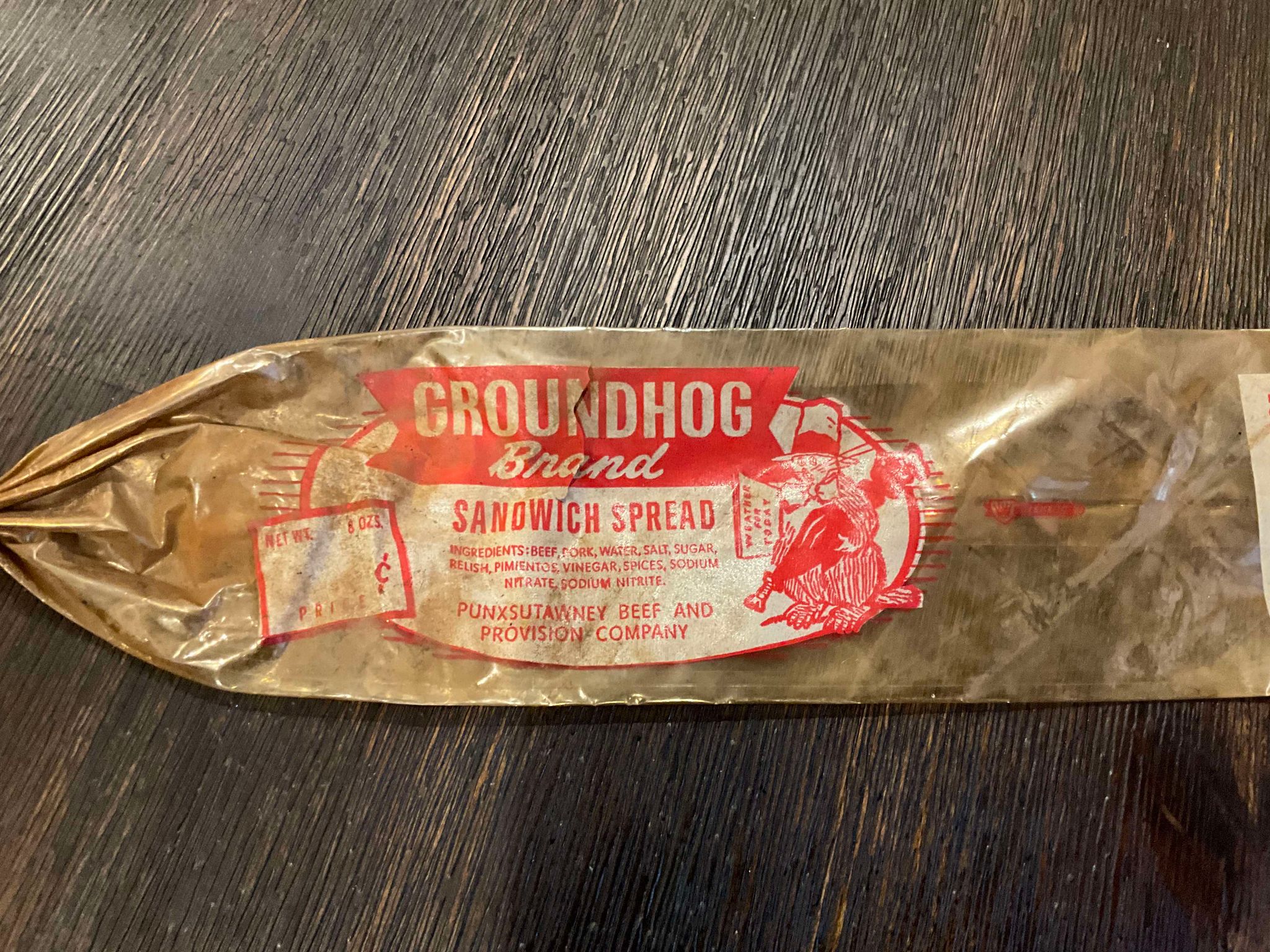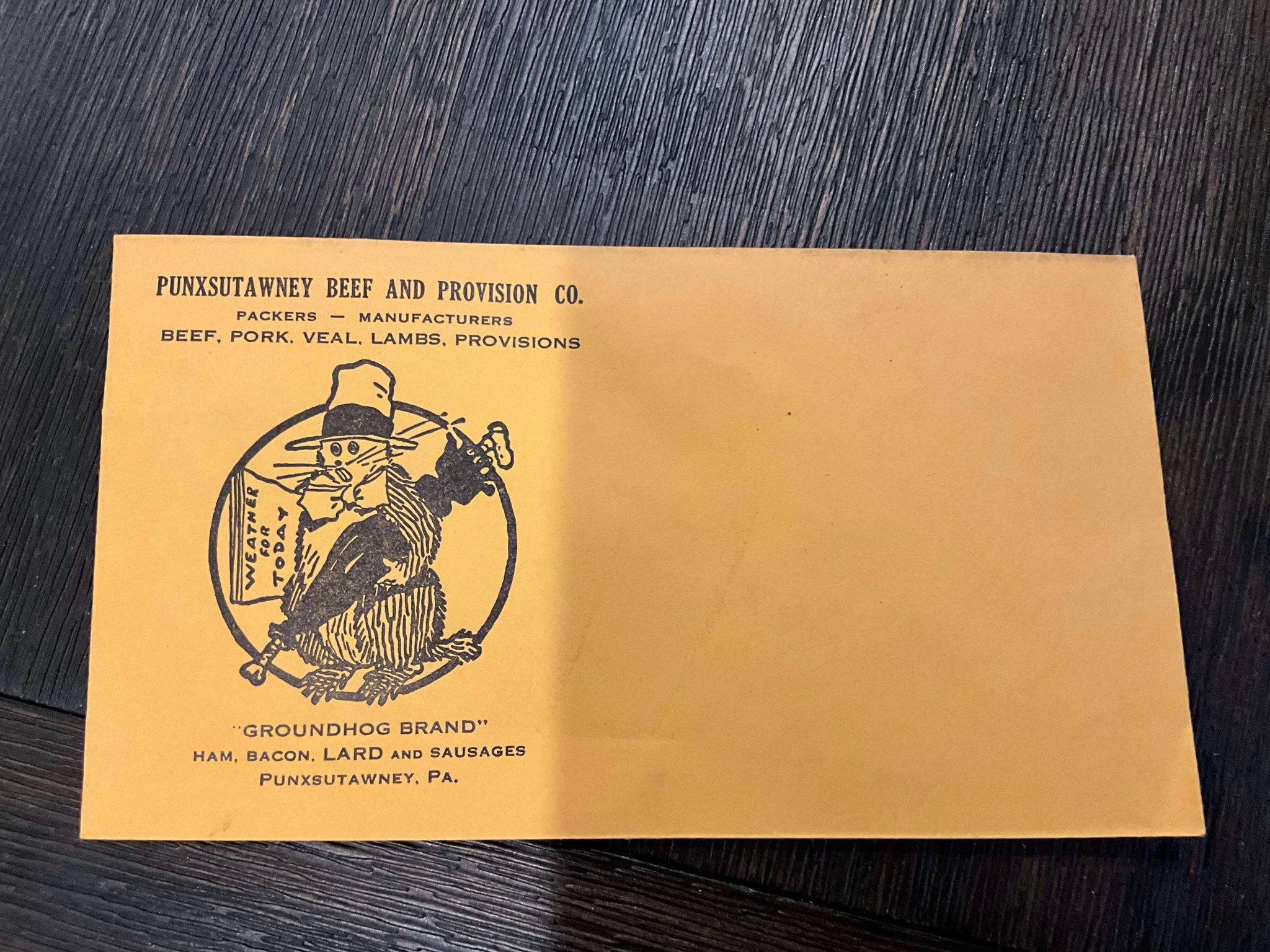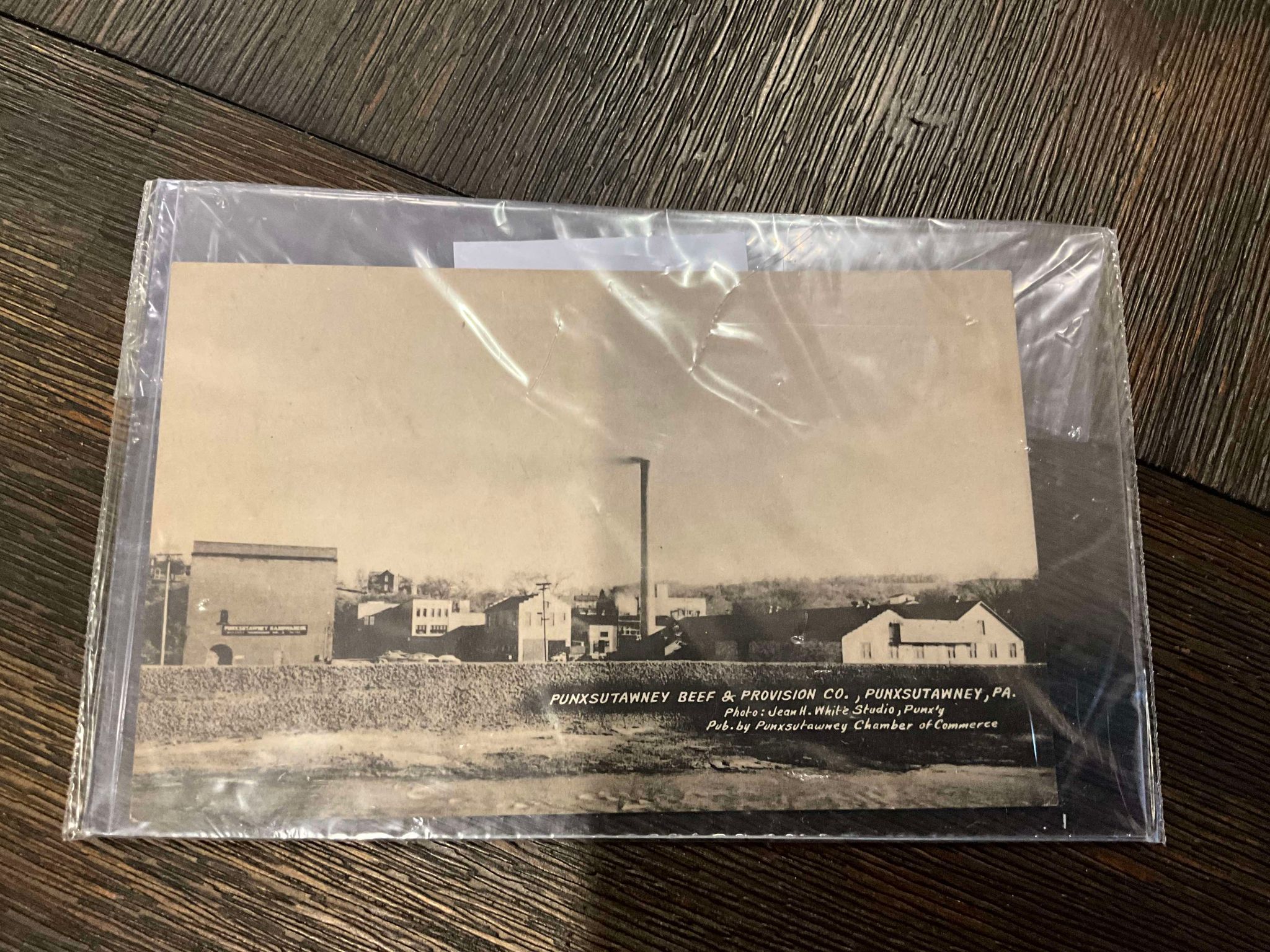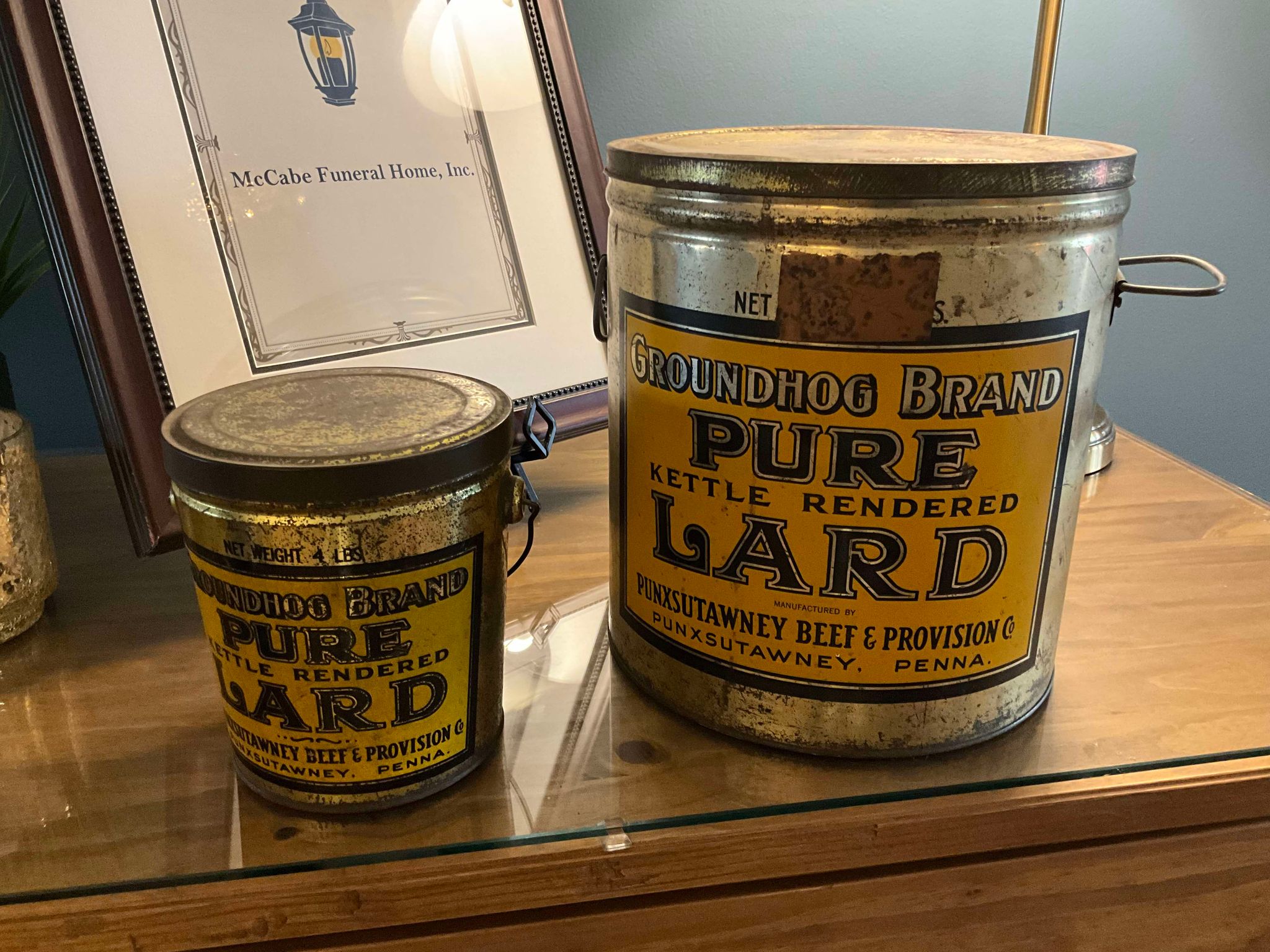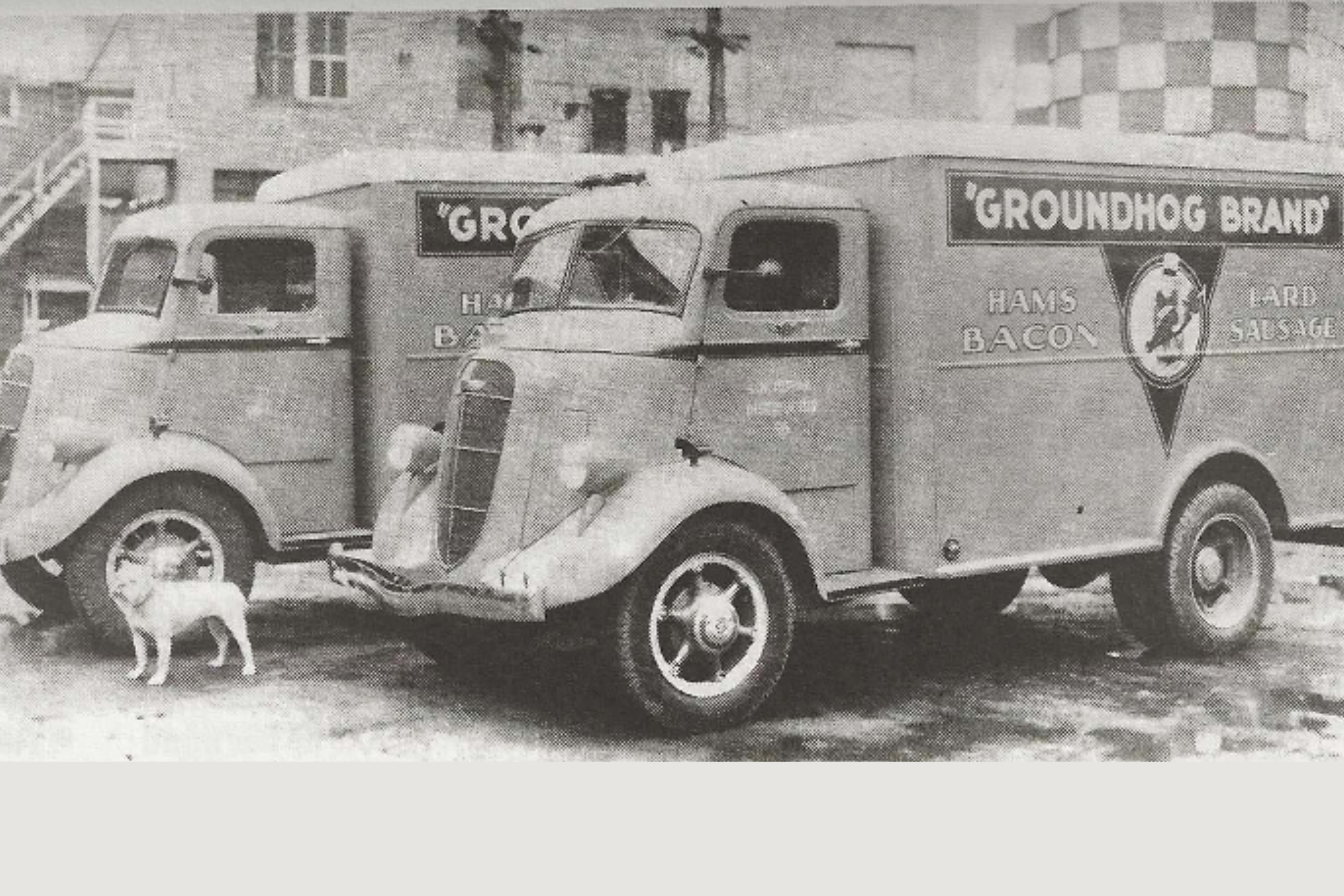
Our Story
We've Been Around For A While!
It all started in 1905 when John Philliber partnered with W.O. Smith and several other leading men in Punxsutawney Pennsylvania to address a problem the whole town was facing:
Nobody wanted to do business in Punxsutawney.
Neighboring towns had plate glass factories, railroad car manufacturers, and other staples of turn-of-the-century American Industrial might. Philliber and others wanted to put Punxsy on the map as well.
Their solution?
Promote Punxsutawney as the Weather Capital of the World due to Punxsutawney Phil's Perennial Precipitation Prognostications.
They struck gold with that marketing campaign, as Groundhog Day and the associated festivities are still going strong 120 years later.
In the spirit of supporting community, and promoting our friend Punxsutawney Phil, the Shuster Family has purchased Punxsy Beef and has started offering products for sale for the first time in over 20 years, under the historic Groundhog Brand.
The acquisition of Punxsy Beef complements the existing Shuster Family Of Businesses including Eleven Oaks Farms, a provider of premium Wagyu Beef based in Newville, PA. To learn more about Eleven Oaks Farms, please visit ElevenOaksFarms.com.
As our brand has been around for almost 120 years, we have put together a slideshow of some products from years gone by, for your enjoyment. You can view the slideshow below.
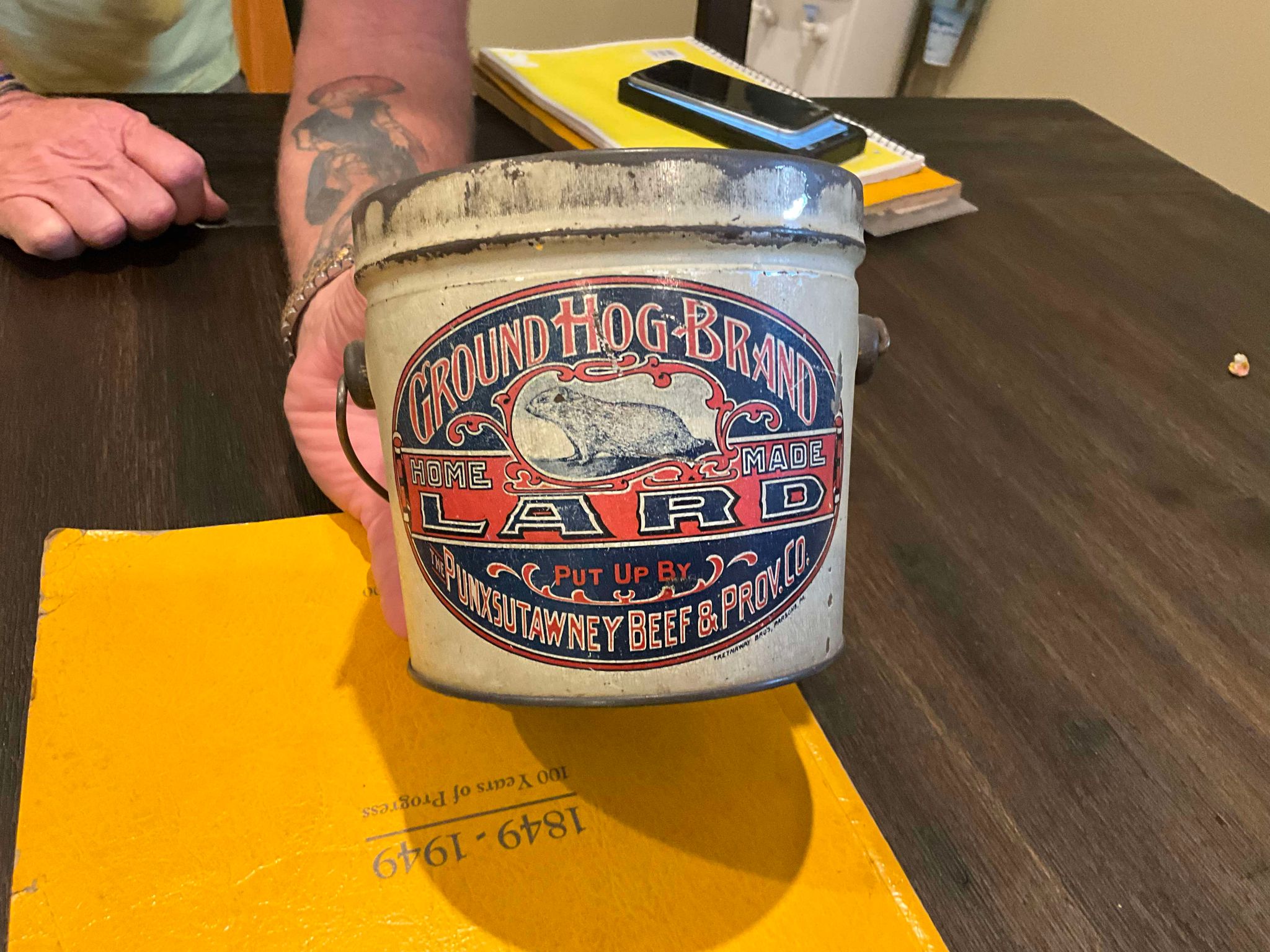
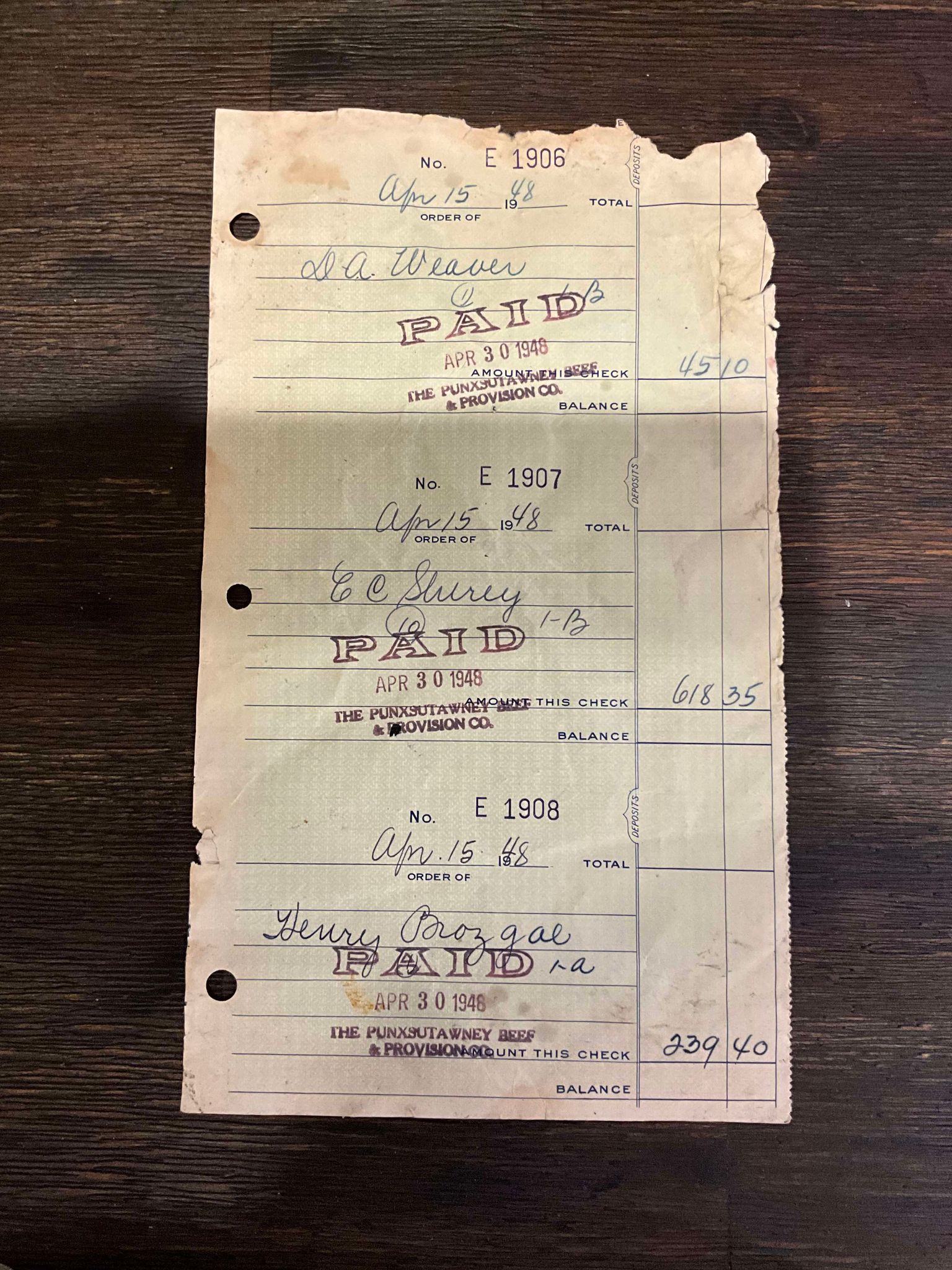
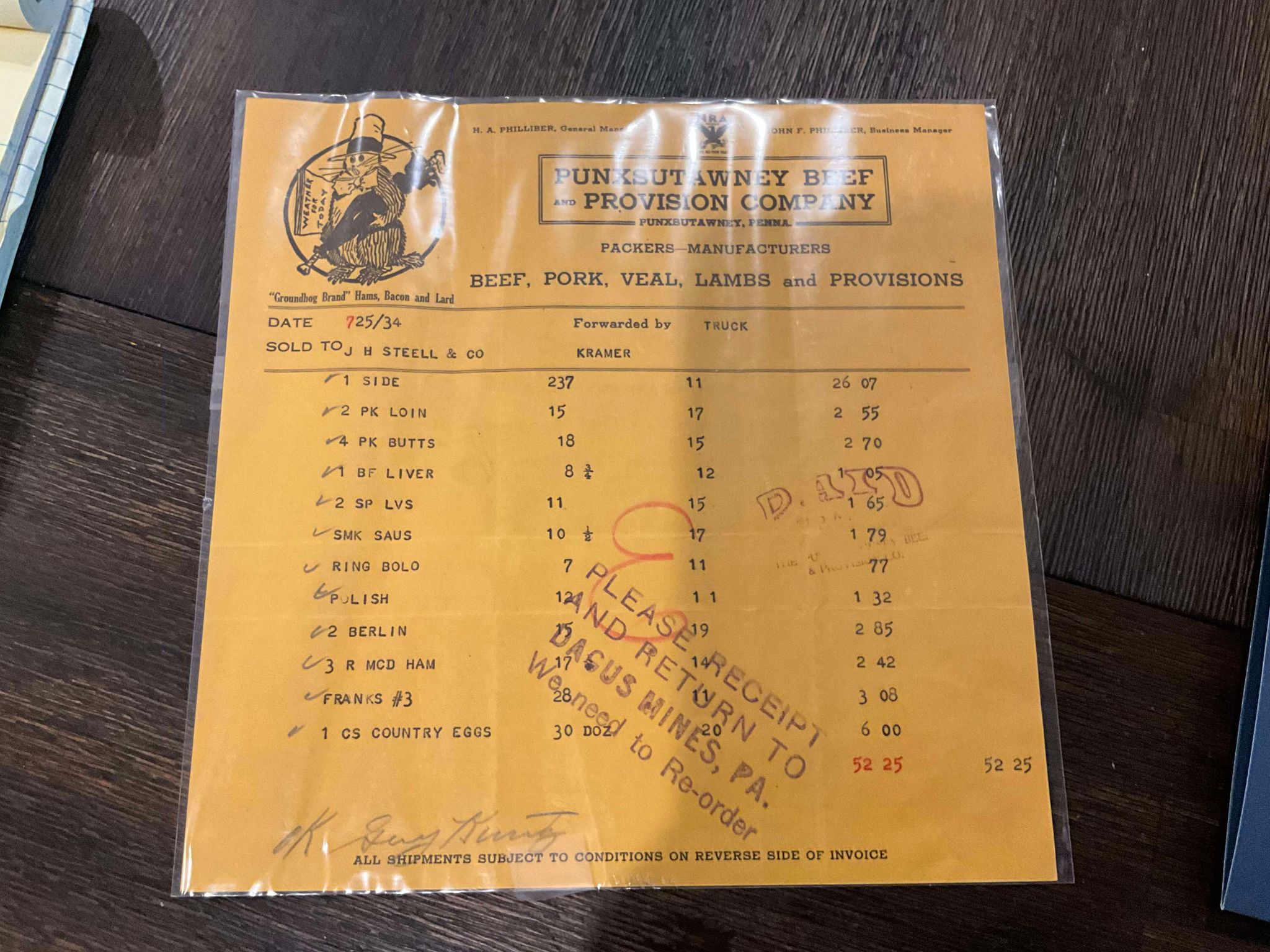

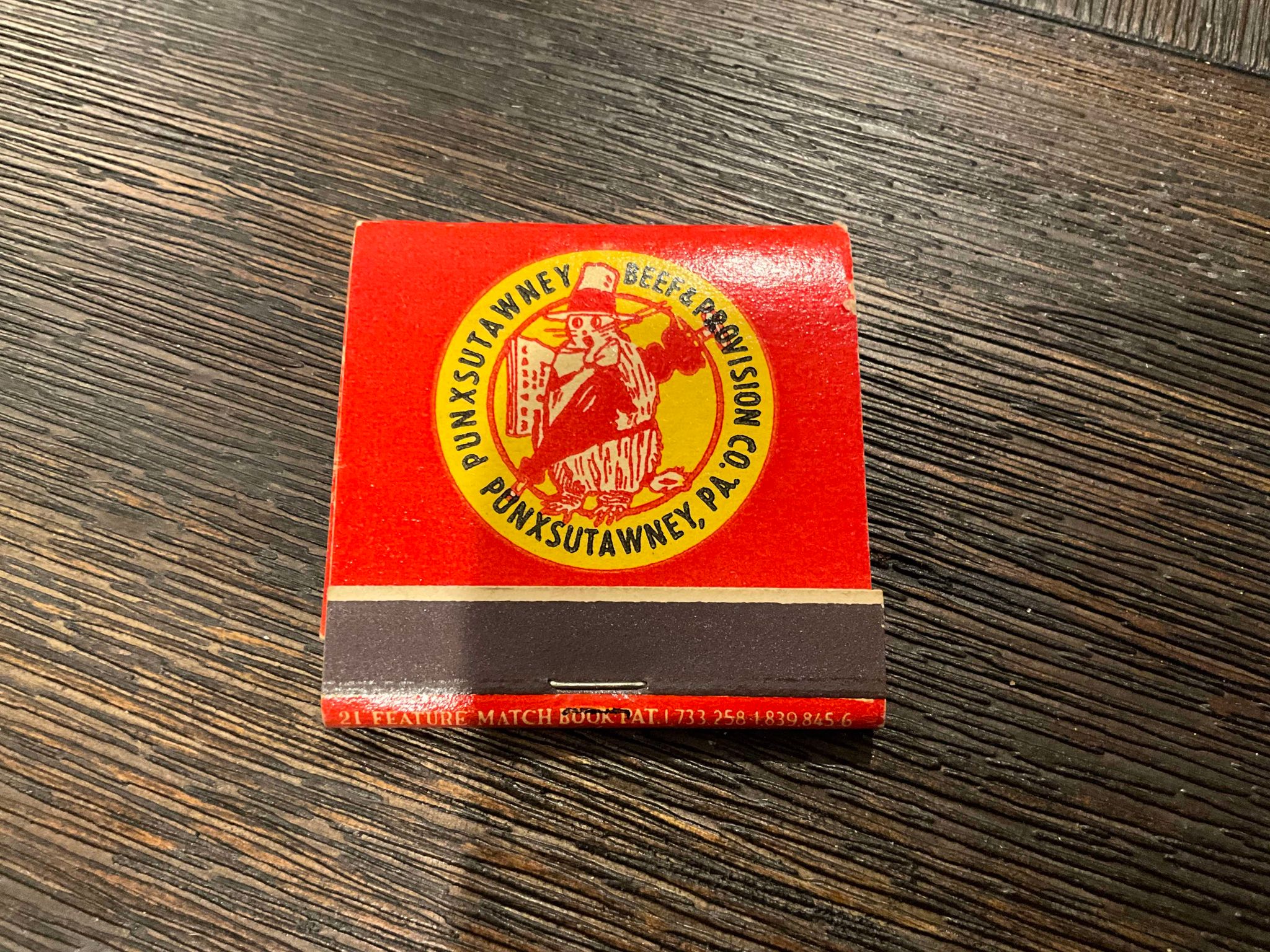
For further reading about the history of Punxsy Beef, check out the below article written by Bruce Philliber for the Punxsutawney Spirit.
“Capitalizing On The Groundhog’s Fame” by Bruce Philliber.
Written in 1992 for The Punxsutawney Spirit Heritage Book (1886 - 1992).
Copyright Held By The Punxsutawney Spirit.
https://www.punxsutawneyspirit.com/. 510 Pine Street, Punxsutawney, PA. 15767
At the turn of the century, Punxsutawney was not only garnering the nation's attention because of its groundhog escapades but was also capturing its share of industrial growth and expansion.
The lumber and Coal Industries and the arrival of the railroad transformed Punxsutawney from a rural farming Community to a maturing Urban hub for the surrounding Villages and farms. The railroad, in particular, accelerated this growth, and by the year 1909, the population reached 9,000, an increase of 33% in just 10 years.
Not only did the railroad bring with it economic expansion, it also brought fierce competition between Punxsy and neighboring towns as each Community felt the need to establish itself as an industrial hub. With the creation of a manufacturing center, Punxsutawney believes growth and prosperity would follow due to the fact that it was 500 miles from Chicago, 360 miles from New York and only 80 miles from Pittsburgh. To gain an edge over DuBois, Clearfield, Indiana, Reynoldsville, and Brookville, Punxsutawney formed a Board of Trade in the late 1800s.
The purpose of this board was to promote new business in the community. the Punxsutawney Spirit and its president and editor W.O. Smith Took a leading role in projecting an image of Punxsutawney as a thriving and Progressive City ready to profit from the country's economic and Industrial revolution. a product of the board of Trades effort was seen in the spirits 36 page industrial Edition (A pictorial and descriptive synopsis of the thriving borough of Punxsutawney and a review of its industrial and social advantages) which was published in 1900. The purpose of this edition, as directed by Punxsutawney’s community leaders, was to attract new industry to the community. Punxsutawney, however, fell short in its effort to entice such industries as a railroad car shop, a plate glass plant and a candy factory - all of them locating in neighboring towns.
The spirit, however, continued to promote business incentives for industrial growth and expansion, such as cash and land donations, along with Bond issues. In the September 25 and 27, 1906 issues, W O Smith warned “that Punxsutawney must get industrious or make up her mind to vegetate as a finished town." He added, “that if Punxsutawney missed the road to prominence in the industrial world … it would not be hard to Imagine a day in the future when grass will be found growing in our erstwhile busy thoroughfares, while the groundhog will live and multiply on our underdeveloped territory.” (There is more than a hint of realism in those words as one walks Mahoning Street today).
In the early 1900s, Smith penned the following rhyme concerning Punxsy’s need for action:
Waitin’ Fer A Boom
Times air sorter tough jest now - -
The days ‘er filled with gloom.
An’ every town is waitin’ - -
Jest waiting’ fer a boom.
What’s a DuBois a-doin’ now?
An’ how does Punxsy loom?
They’re full o’ hope an’ promise
But - - waitin’ fer a boom
There’s Reynoldsville an’ Brookville,
An’ Indianner, too - -
Seem t’ be considerin’
Of what they’re goin’ t’ do.
An’ all the other country towns
From Baalbec to Kartoum
Are keepin’ up their courage
A-waitin’ fer a boom.
Most of ‘em will be waitin’
Until the crack o’doom.
And when they’re dead and buried
We’ll place upon their tomb:
“They didn’t keep a hustlin’
While waitin’ fer a boom.”
However, there were reasons for optimism toward Punxsy’s efforts for industrial growth by 1906, for the publicity centering around the Groundhog Day and late summer outing activities had created notoriety and prominence for the community. The Spirit, in an article written in 1932, stated that (after the turn of the century) nearly 100 men were in attendance at the Groundhog picnic, 200 were there the following year - and finally it grew until it was not uncommon to entertain 1,000 people. Governors, celebrities and scores of others often attended.
Because of the national attention and exposure centering around “the Groundhog Town” in the big city newspapers such as Pittsburgh and Washington, D.C. (see accompanying stories, “The Early History of the Groundhog Club” and “Groundhog Club Symbol Reflect . . .”), Punxsy’s leaders had reason to believe they were in a good position to promote Punxsy as a “hustling and progressive community eager for industrial expansion.”
With the assistance of The Spirit, which became a daily newspaper in September, 1906, the leaders of the community proclaimed Punxsy “the Weather Capital of the World,” and it was theri hope that Punxsy’s reputation for “perfect groundhog weather” would bring new industry to the community.
On February 12, 1906, a new business was launched in Punxsutawney - the Punxsutawney Beef and Provision Company. It marked itself under the label “Groundhog Brand”, and its logo - used on packaging, advertisements, and delivery vehicles - was the same artwork adopted by the community to promote Punxsutawney’s Groundhog. The corporate officers and stockholders of the Punxsutawney Beef and Provision Company were local businessmen. The President, John P. Wilson, also served as Secretary-Treasurer and business manager of The Spirit. W.H. Heckendorn, secretary-treasurer of Punxsy Beef and Provision, owned the W.H. Heckendorn Wholesale Liquors Co. John A. Philliber, the General Manager of Punxsutawney Beef and Provision, was the owner of the Star Meat Market.
Other stockholders included Samuel A. Rinn, President of Central Pennsylvania Bankers Association and an officer in the Punxsy National Bank, Chamber of Commerce and Adrian Hospital Board, and president and general manager of the Valier Coal Company, Dayton Coal Company, Summit Coal Mining Company and S. A. Rinn and Company; Adam C. Robinson, owner of Robinson’s Undertaking and Furniture business; Frank C. Lang, cashier of Punxsy National Bank; Samuel McHenry, superintendent of the Dayton Mine; Abraham Ligh, scrap metal dealer and father of Sam Light; Dominic Trunzo, grocer and meat market owner; G.W. Hess, partner in Hess Brothers Meats; and W.O. Smith.
The involvement and investments of these local entrepreneurs reflected their belief in Punxsutawney’s future, and the creation of the Punxsy Beef and Provision Company was but one business which gave Punxsutawney a vital employer for over 50 years.
Additional businesses over the years have benefitted from their association with the Groundhog to sell their manufactured products, hoping the Groundhog’s fame would promote them. One of these, for example, was the Jefferson Bottling Works which was founded in 1911. It used the Groundhog on its bottles as well as in other advertising.
Despite some success stories, Punxsutawney has not become the producer of industrial products envisioned by the early turn-of-the-century leaders, nor has it fulfilled their hopes that the notoriety of the Groundhog would create lasting prosperity. Nevertheless, long after some of the businesses have closed, the advertising of the community still centers around the Groundhog and Groundhog Day.
This advertising has made people aware of Punxsy and may indeed be our most valuable resource. Punxsy has used the changing media technology over the years to its promotional advantage. As a result, even though it may never be a city of 100,000 as envisioned by W.O. Smith, millions have heard of Punxsutawney.
The early participants of the Groundhog Club and those who followed have worked hard to keep the legend - and therefore, the community - alive. It is a tribute to them that we, today, continue to utilize all our resources to find ways for the town to prosper.
